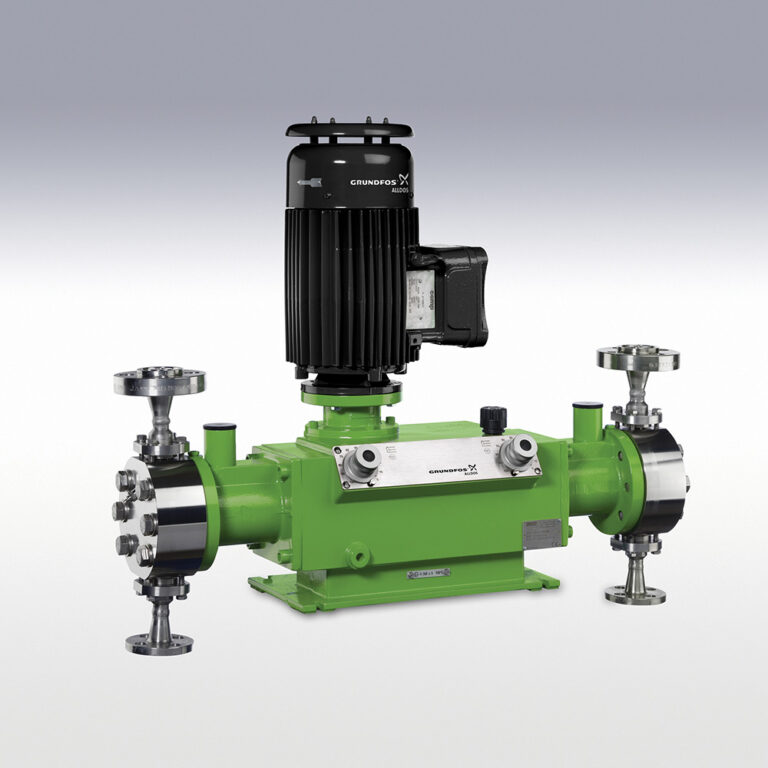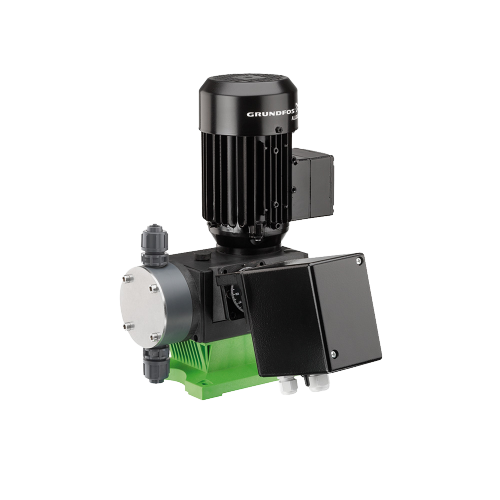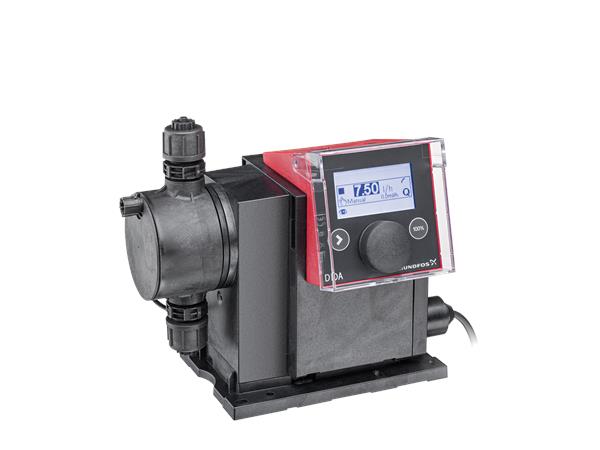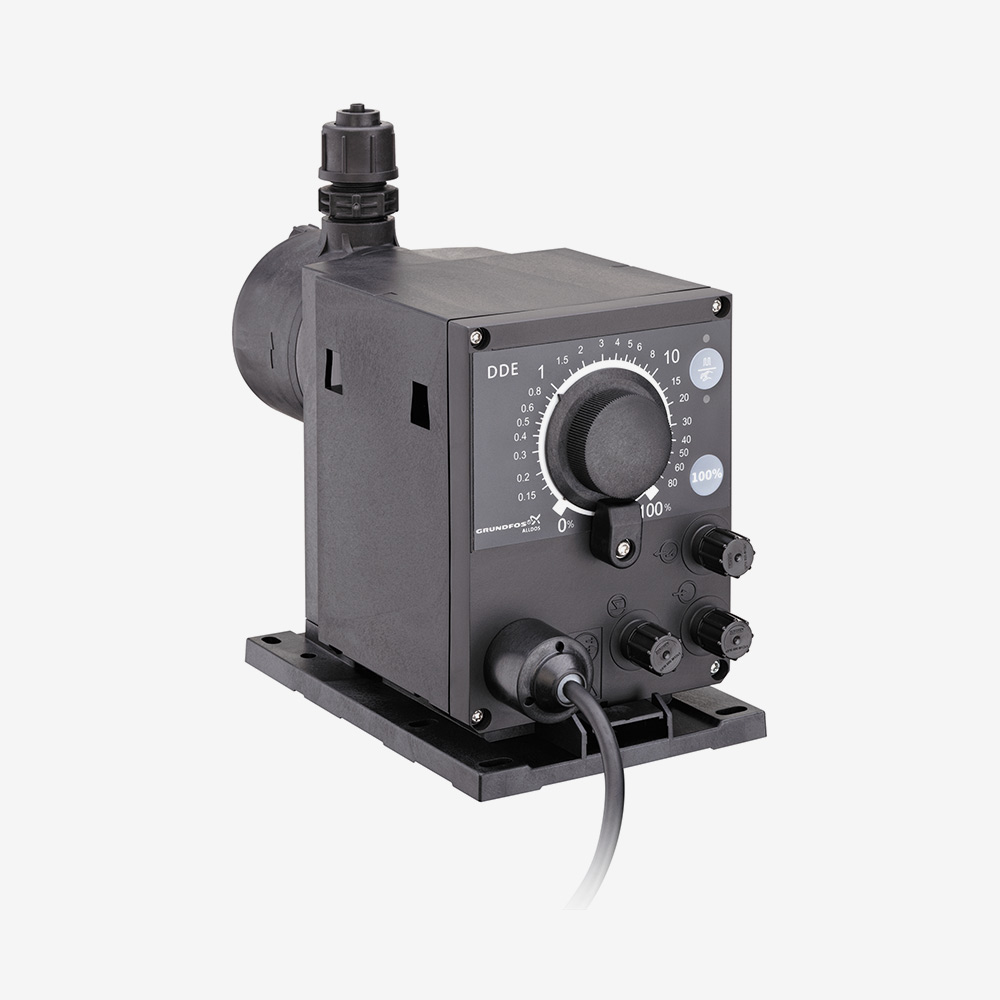PUMPING SOLUTIONS
Dosing Pumps
OVERVIEW
Dosing pumps are the ideal solution for applications in less aggressive environments requiring complex dosing. The pump allows small but accurate volumes of liquid or chemicals to be added to any streams or vessels. Each dosing pump typically has an on/off function, alarms and warning signals.
Typically, these pumps are designed to handle a wide range of highly corrosive, volatile and toxic chemicals. Tricel supplies intelligent, digital dosing pumps, the latest energy-efficient pumping solution in the market.
If you have any questions, feel free to call us or use our quote form
To speak to one of our agents online, click here
How do dosing pumps work
- Positive Displacement Mechanism: These pumps use a positive displacement mechanism, which means they displace a fixed volume of liquid with each cycle of operation. This ensures accuracy in delivering a consistent and precise amount of the liquid
- Piston or Diaphragm: Dosing pumps can have a piston or diaphragm as the moving part. In a piston pump, a piston moves back and forth to displace the liquid, while in a diaphragm pump, a flexible diaphragm is used to create pressure and push the liquid out.
- Adjustable Stroke Length: Dosing pumps usually have an adjustable stroke length, allowing users to control the volume of liquid delivered in each cycle. This adjustment is critical for fine-tuning the dosing process based on specific requirements.
- Variable Speed Control: Some pumps have variable speed control, allowing users to adjust the pump’s operating speed. This feature is beneficial when the dosing rate needs to be changed dynamically.
- Electronic Control: Many modern dosing pumps have electronic controllers that enable precise control over the dosing process. These controllers can be programmed to set specific dosing rates and intervals.
- Accuracy and Reliability: Dosing pumps are designed for high precision and reliability. They ensure that the desired amount of liquid is consistently delivered, minimizing the risk of under- or overdosing.
- Applications: Dosing pumps are used in various applications such as water treatment for adding chemicals like chlorine or coagulants, in agriculture for fertilization, in industrial processes for adding reagents, and in pharmaceuticals for precise dispensing of medications.
In summary, a dosing pump is a specialized pump designed for accurate and controlled dispensing of liquids in various industrial applications, ensuring precise dosing for optimal results.
Types of dosing pumps

There are several types of dosing pumps, each designed to suit specific applications and requirements. The main types include:
-
Diaphragm Pumps:
- Mechanism: Diaphragm dosing pumps use a flexible diaphragm as the moving part to displace the liquid. The diaphragm is mechanically or hydraulically actuated, creating pressure variations to push the liquid through the pump.
- Applications: Commonly used for metering and dosing in water treatment, chemical processing, and industrial applications.
-
Piston Pumps:
- Mechanism: Piston dosing pumps use a reciprocating piston to displace the liquid. The piston’s movement creates suction and discharge strokes, allowing precise control over the dosing volume.
- Applications: Widely employed in applications requiring high-pressure and high-precision dosing, such as in pharmaceutical manufacturing and oil and gas industries.
-
Peristaltic Pumps:
- Mechanism: Peristaltic pumps use a flexible tube or hose and rollers to squeeze and release the liquid, creating a pulsating flow. The tube is usually the only part in contact with the fluid, making them suitable for handling corrosive or sensitive substances.
- Applications: Commonly used in pharmaceuticals, food and beverage, and chemical processing where avoiding contamination is critical.
-
Solenoid Pumps:
- Mechanism: Solenoid dosing pumps use an electromagnetic solenoid to drive a diaphragm or piston, resulting in the displacement of the liquid. They operate in an on/off manner, making them suitable for intermittent dosing.
- Applications: Often used in applications where precise and intermittent dosing is required, such as in water disinfection systems.
-
Plunger Pumps:
- Mechanism: Plunger dosing pumps use a reciprocating plunger to displace the liquid. The plunger movement creates a suction and discharge action, enabling accurate dosing.
- Applications: Found in industries requiring high-pressure and high-accuracy dosing, including chemical processing and water treatment.
-
Rotary Pumps:
- Mechanism: Rotary dosing pumps use a rotating mechanism to move the liquid. They may have gears, lobes, or screws that displace the fluid in a continuous manner.
- Applications: Suitable for applications where a constant and smooth flow of liquid is required, such as in polymer dosing for wastewater treatment.
Chemical dosing pumps
Chemical dosing pumps play a crucial role in various industries where accurate and controlled dispensing of chemicals is essential. These pumps are designed to efficiently and precisely inject chemicals into a system, ensuring optimal process conditions in applications ranging from water treatment and industrial manufacturing to pharmaceuticals and agriculture.
Functionality:
Chemical dosing pumps operate on the principle of displacement, where a specific volume of fluid is displaced and delivered with each stroke or revolution of the pump. These pumps are commonly categorized into positive displacement pumps, such as diaphragm pumps, peristaltic pumps, and piston pumps, each tailored to specific applications.
- Precision Dosing: Chemical dosing pumps are engineered to deliver chemicals in exact and consistent quantities. This precision is vital to achieve desired chemical concentrations and maintain the effectiveness of the treatment or manufacturing process.
- Positive Displacement Mechanism: Most chemical dosing pumps utilise a positive displacement mechanism, such as a diaphragm, piston, peristaltic, plunger, or rotary mechanism. This ensures accurate and repeatable dosing, regardless of variations in pressure or viscosity.
- Various Types: Chemical dosing pumps come in different types, each suited to specific applications. Common types include diaphragm dosing pumps, piston dosing pumps, peristaltic dosing pumps, solenoid dosing pumps, and plunger dosing pumps.
- Corrosion Resistance: Chemicals can be corrosive, so chemical dosing pumps are often designed with materials that resist corrosion. This helps ensure the pump’s longevity and prevents contamination of the dosed chemicals.
- Adjustability: Many chemical dosing pumps feature adjustable settings, such as stroke length, flow rate, and dosing frequency. This adjustability allows operators to fine-tune the dosing parameters according to specific requirements and changing conditions.
- Automation and Control: Advanced chemical dosing systems often incorporate electronic controllers for automation and precise control. These controllers enable programming dosing schedules, monitoring dosing rates, and integrating with overall process control systems.


Features of a Dosing Pump
Dosing pumps are designed to pump a set flow rate of chemicals into a system. Suppose you are still determining the correct size of dosing pump you require. In that case, Grundfos have a sizing calculator that allows you to enter the parameters, including flow rate, head size, mains voltage, inlet and outlet dimensions.
Features of a Grundfos Dosing Pump include:
- Simple control system
- User-friendly technology
- Adaptable to different environments or situations
- The FlowControl system prevents unwanted downtime
- The AutoFlowAdapt function ensures a consistent dosing process with the required flow.

PACKAGED PUMPING SETS
Designed to deliver sufficient volume and water pressure
FIRE PUMPS
Full range of Fire Protection Pumps from small to packaged systems
PACKAGED PUMPING STATIONS
Pumping stations offer the ideal solution where gravity drainage is not possible
RECENT PROJECTS
Recent Projects Completed
Tricel is one of the largest UK pump distributors specialising in Commercial Building Services projects. We offer a wide range of products from circulator pumps to Wet Riser booster sets.
Our team includes experts which are happy to select and quote your equipment requirements, or attend site and size the equipment from scratch. We at Tricel pride ourselves on the highest possible levels of customer service, before, during, and after project completion.
We provide preventative maintenance contracts and also cater for specific repairs, including replacements seals, or complete overhauls.
150
Hotels
125
Schools
50
Hospitals
300
Apartment Blocks
305
Commercial Buildings
PUMP COMMISSIONING
Our skilled team of specialist engineers are ready to specify, supply, install, service and maintain pumps and their control systems
SERVICE & MAINTENANCE
We provide preventative maintenance contracts and also cater for specific repairs, including replacements seals or complete overhauls
SITE SURVEYS & ASSESSMENTS
Our technical team will visit your location and complete an entire site survey to ensure your project is accurately specified, and the most suitable system installed and maintained to the highest quality
CUSTOMER TECHNICAL SUPPORT
Through our 35 years of operation, we have accumulated a wealth of product knowledge and application experience that we use to support our customers
